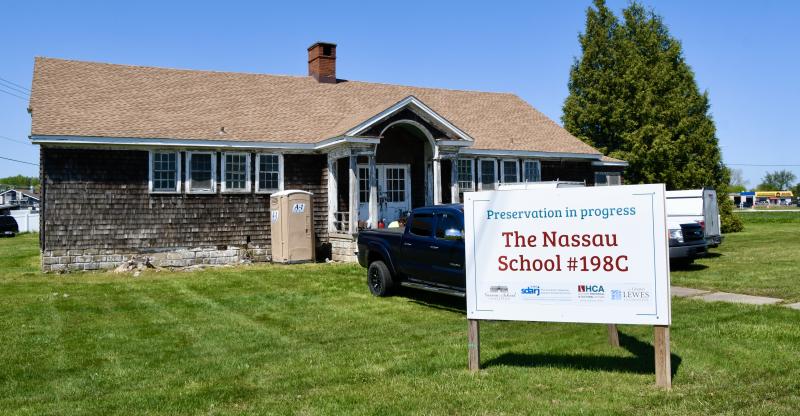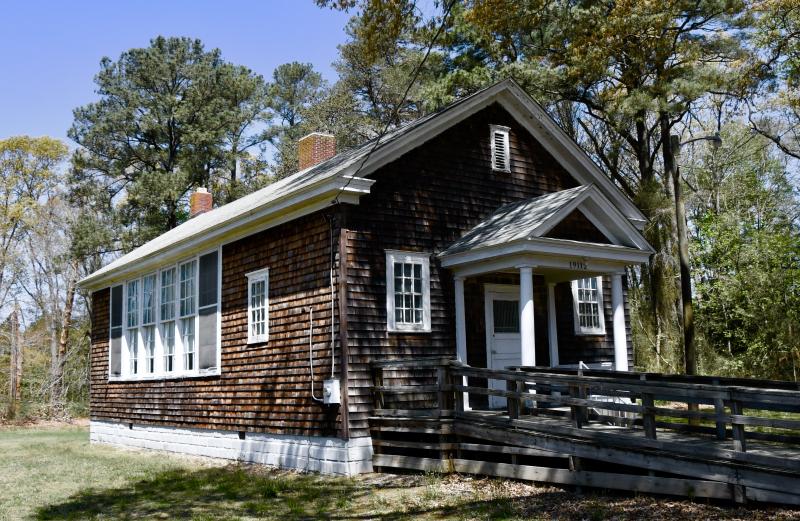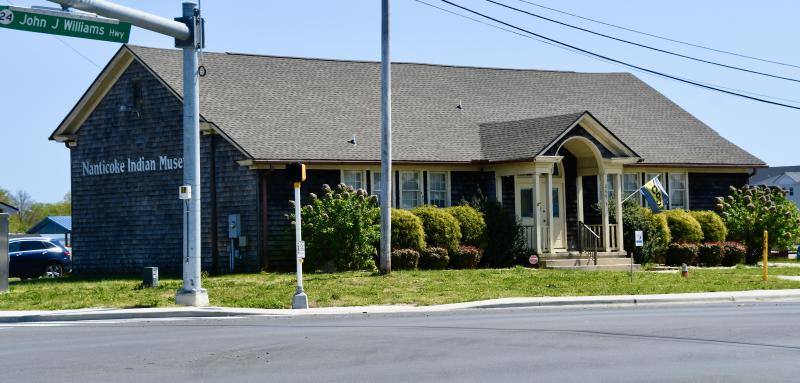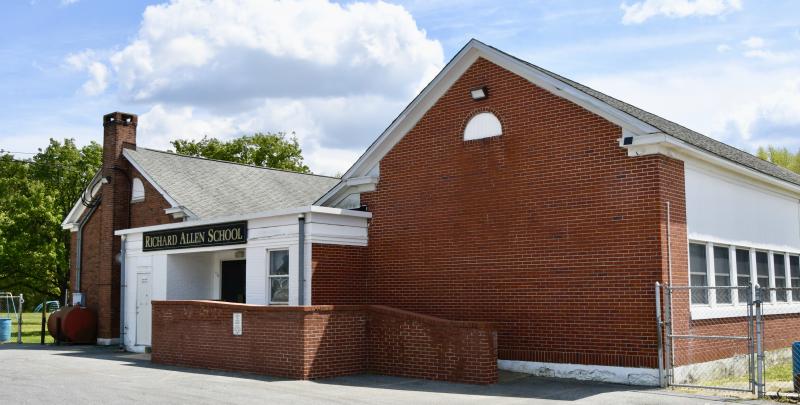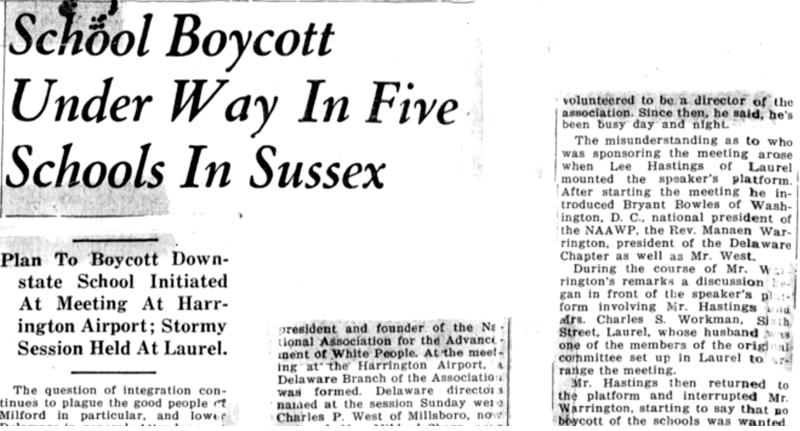Du Pont Experiment includes African American schools
It’s a chapter of county history that needs to be told and retold so we never forget how terrible segregation was.
Schools in Sussex County weren’t integrated until 1962 after the separate-but-equal education law was found unconstitutional in 1954. Thanks to the du Pont Experiment, African American children had their own country schools throughout the county, but were forced to go upstate to get a high school education until 1950.
The du Pont Experiment
Prior to the 1920s, conditions of African American schools were deplorable. It disgusted one of the richest and most influential men in Delaware. After sending out research teams, Pierre S. du Pont funded construction of 90 schools in Delaware, including 33 in Sussex County. He spent more than $6 million to build the schools throughout the state, which translates to more than $93 million in today’s dollars. That research team recommended that 392 schools of the 400 in the state be demolished or vacated.
There is a little more to that story. According to report “Locating Delaware’s du Pont Colored Schools” by the University of Delaware Center for Holistic Architecture and Design, the Service Citizens of Delaware was formed in 1918 to advance social reform using du Pont money.
The research was in partnership with the Delaware State Historic Preservation Office.
Du Pont, who was a member of the state school board, was a passionate school reformer. He established the Delaware School Auxiliary to administer his building plan.
The du Pont Experiment was like no other ever undertaken in the state.
There were African American schools dating back to at least 1890, with more than 1,000 students in Sussex County at 28 schools. Teachers were paid $23.50 per year.
In all, according to University of Delaware research, of the 90 original schools, 48 still exist. Nearly half were one-room schools, 29 were two rooms and 13 had multiple rooms.
School culture
While no one can argue that segregation wasn’t bad, there was another story relating to the Sussex African American schools. Yes, it’s true they used hand-me-down books, sports equipment and supplies from white schools, but the schools also became the social focal point of each community they were in. The schools were places for parties, dinners and dances.
Besides basic education, the schools offered classes in politics, the arts, homemaking, woodworking and vocational training.
Dedicated teachers poured their hearts and souls into educating young people. Bonds were formed, lives were changed and many students received a strong foundation that helped them prosper in later years.
Many former students I’ve spoken with look back on their days at schools like Rabbit’s Ferry and Nassau with great feeling.
Sussex schools
The Sussex schools were the first ones to be completed because of the great need in the county. Schools were located in Lewes, Seaford, Nassau, Rehoboth Beach, Bridgeville, Georgetown, Slaughter Neck, Millsboro, Milton, Long Neck-Oak Orchard, Rabbit’s Ferry near Lewes, Ellendale, Frankford, Pottsville, Middleford and Williamsville.
In larger towns, the schools were constructed of brick, while most followed the same basic design covered in the signature brown shingle siding.
Nineteen of the buildings are still standing. Some have been repurposed, and 13 have either been demolished or fallen down.
Some of the existing schools include Rabbit’s Ferry Community Center on Robinsonville Road near Lewes and Richard Allen School in Georgetown, which is a community center.
Nassau School, located along Route 9 near Five Points, is owned by Delaware Department of Transportation. It has been spared and is undergoing renovation.
Frederick Douglass Elementary School in Seaford has been added onto over the years and serves as one of the district’s schools, as does Phillis Wheatley Elementary School in Bridgeville.
The Rehoboth School is now the Community Resource Center on Oyster House Road. The Long Neck-Oak Orchard School is home to the Nanticoke Indian Museum along Route 24 just outside Long Neck. The Lewes School, which is located behind the new Lewes Elementary School, has had several uses over the years.
See much more on the schools in a May 10 column.
Jason High School
The schools either taught up to sixth or eighth grades, and students wanting to attend high school were forced to go to Howard High School in Wilmington, which was also part of the du Pont building plan.
In 1950, William C. Jason High School opened in Georgetown, which provided a new world of learning for African American students. It was first opened for ninth through 12th grades, but grades seven and eight were added in 1953.
It shut down in 1967 when schools were finally integrated in Sussex County and became part of Delaware Technical Community College.
The school still has an active alumni group.
The Milford 11
The plight of African American students became a federal issue with the historic Brown vs. Board of Education case in 1954. The U.S. Supreme Court ruled that separate-but-equal schools were unconstitutional. In 1955, justices laid out a plan for desegregation of all schools at “deliberate speed,” which took another decade to come to fruition.
The speed hit a major bump in the City of Milford when 11 African American 10th-grade students enrolled and attempted to attend classes Sept. 8, 1954. After the first day, students came home talking about “Black kids” in their classes, and all hell broke lose, wrote Karen Chenoweth of the Education Trust.
The Milford 11 became a lightening rod for racism and bigotry. On the second day, 300 to 400 people were at the front door of the school yelling and jeering at the students. The story soon attracted the national media.
A book by Orlando Camp, a former member of the Milford 11, and local historian Ed Kee describes in detail the events of that September in 1954 in the book, “Integration Fear Robbed Hope from Eleven Black Students.” As one of the first schools in the nation to receive a petition for African American students to attend school, the Milford Board of Education approved the request.
That set off a chain reaction bringing out the ugliness of segregation. While parents were already riled up, the presence of agitator Bryant Bowles only added fuel to the fire. Thousands attended rallies joining Bowles supporting a boycott of the schools. He urged parents to keep their children home if “any Negro enters the school.”
Intimidation was the order of the day as threats were made to white parents still sending their children to school. Believe it or not, children actually called other children telling their classmates that their daddy said they might get killed if they went to school.
Many parents pulled their students out of the schools, and the first tide of white flight began.
Providing a backdrop, Jim Crow laws were still very much in effect in the 1950s. Jim Crow were state or local laws that enforced or legalized racial segregation.
Eventually, with the threat of violence, schools were closed temporarily, and other Sussex schools followed suit. The Milford Board of Education resigned, and the Delaware State School Board took over. Twenty-eight days after the students tried to attend school, the board enrolled them at William C. Jason High School in Georgetown. Camp went to William Henry High School in Dover.
The school board reformed, and on Sept. 30 backed the state’s action.
Unfortunately, Milford had set a pattern for massive resistance against integration that spread throughout the country.
It would take eight more years for desegregation to occur in 1962.
For more information, check out a YouTube documentary on the Milford 11 at youtube.com/watch?v=uu61SX-jkyA.
To read the University of Delaware’s report, go to storymaps.arcgis.com.
To read the Education Trust presentation, go to edtrust.org
